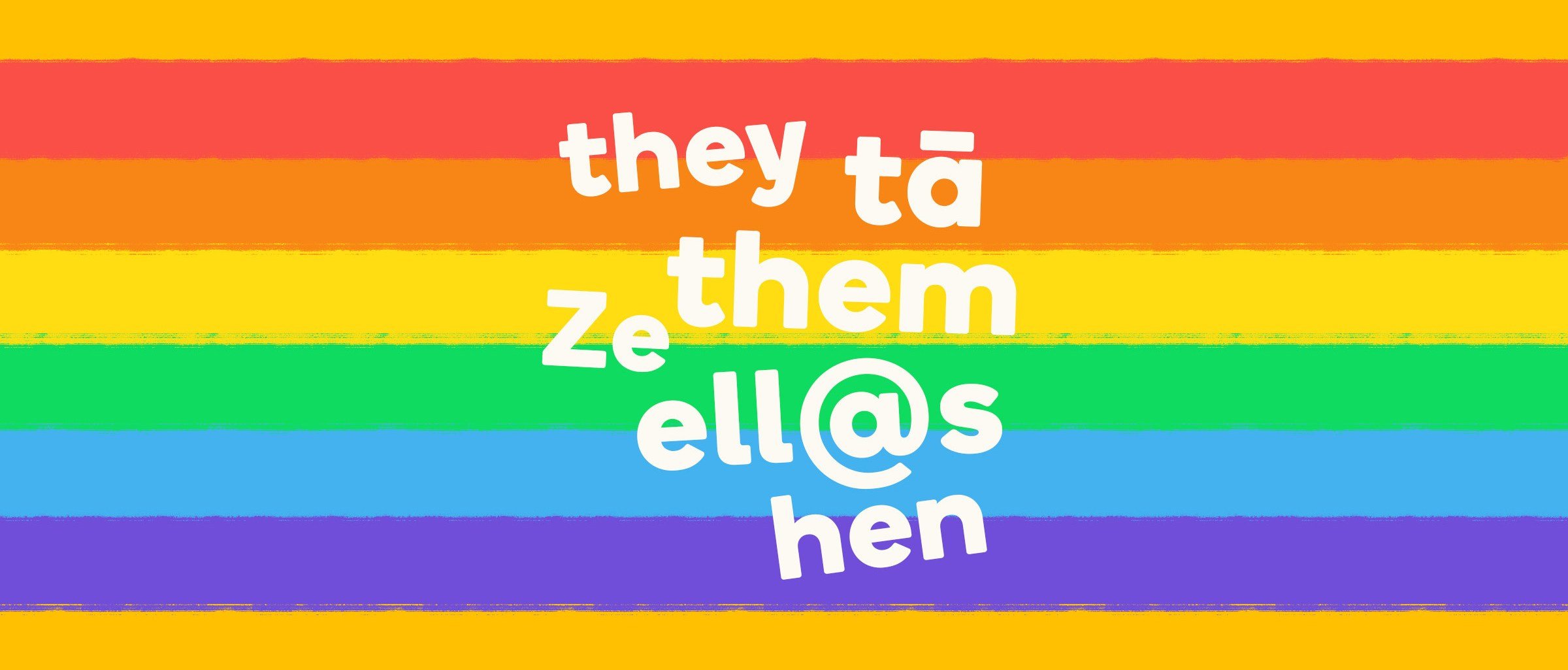Language isn’t just what we use to communicate with other people, it’s also a tool we use to signify meaning and express how we see other people and ourselves. We validate ourselves by the words we use to describe who we are and how we feel in our own language, otherwise we may feel our true self is not validated or expressed.
So what happens if there just isn’t a way in your language to talk about your gender identity? If you’ve spoken English your entire life, it’s hard to imagine a scenario like that. But that’s the reality for many people who are non-binary or gender non-conforming who don’t have a neutral grammatical category.
Gender in Different Languages

There are some languages that have no gender! Hungarian, Estonian, Finnish, and many other languages don’t categorize any nouns as feminine or masculine and use the same word for he or she in regards to humans.
In spoken Mandarin, there is also no distinction between the “she” or “he”. However, written Mandarin does and “she” is written 她, whereas “he” is written 他 even though they’re both pronounced “tā” (you know, just to make things complicated )
One way around this is to use the phonetic representation of the form so that there is not a gendered character. For example, writing ‘ta’ instead of using the Chinese script.
There are also other languages that have found a solution! In English, we can use ‘they/them’ or other gender-neutral pronouns, like ‘ze’, ‘hir’ or ‘xey’, in order to avoid gendering someone. Similarly, in Swedish, the word hen was added in 2015 to the country’s official dictionary as an alternative gender-neutral pronoun to the male hon and female han. A hen revolution!
Spanish, German and French?
.gif?width=480&name=giphy%20(1).gif)
But what about gendered languages (such as Spanish, German, French etc), in which both pun in French— “She is a lovely table!”— while a tree is a masculine noun in German. “I planted him in the forest, where he will grow very tall!”
Well, there are some creative solutions that have been found. In Spanish some people will use a third category of elle/elles that uses an e instead of an o/a to mark gender. Ahhh Clever!
Other alternatives include using the @, for example l@s niñ@s simpátic@s, or using an x, lxs niñxs simpáticxs.
However, these haven’t been widely adopted and have been widely opposed by both the Royal Academy and many Spanish speakers.
This is even more difficult in Semitic languages such as Hebrew as not only are the nouns and adjectives gendered, but the verbs and numbers too! There are 8 different ways you could say ‘I am listening to you’ in Hebrew all distinct by gender
Whilst some solutions have been suggested, such as using a mixture of the masculine and feminine forms, it hasn’t quite caught on and has not been popular. Yet.
Keep Evolving!
.gif?width=320&name=giphy%20(2).gif)
When the language you speak doesn’t reflect your identity, it can be very frustrating. Fortunately, language is dynamic and evolving and many have been using creative ways to adapt it to reflect our ever-changing reality. We can find and use inclusive grammatical forms and in this way, we can make sure that it evolves in a way that reflects everyone’s identity. But at the end of the day, it’s all a question of respect. Refer to someone how they wanted to be referred to, and if you’re not sure what pronouns or Hebrew verb forms to use with someone, don’t be afraid to ask.










